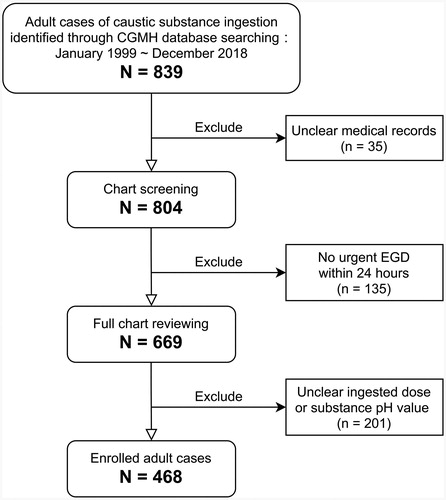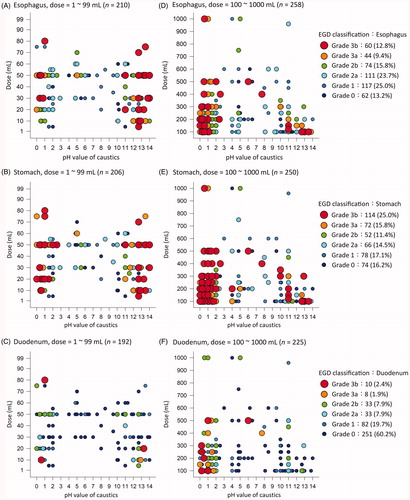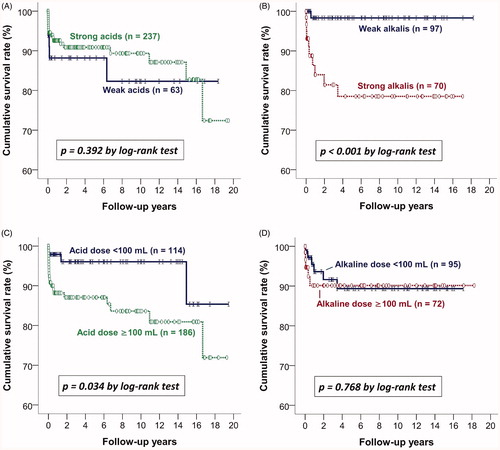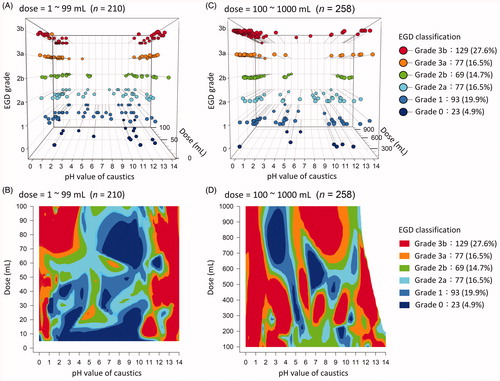Figures & data
Figure 1. Diagram of the study population enrollment. CGMH, Chang Gung Memorial Hospital; EGD, esophagogastroduodenoscopy.

Table 1. Demographic characteristics of the enrolled patients with caustic substance ingestion.
Table 2. Outcomes and clinical courses of the enrolled patients with caustic substance ingestion.
Figure 3. Behavior-related etiology: strong acids/alkalis themselves, to some extent, limited the ingested dose.

Figure 4. Severity of caustic injury in the esophagus, stomach, and duodenum as assessed via esophagogastroduodenoscopy (EGD).

Table 3. Risk assessment of dose, pH, endoscopic findings, complications, and long-term survival outcomes.
Figure 5. Kaplan–Meier method: long-term survival outcomes were dose-dependent for acids and pH-dependent for alkalis.

Table 4. Multivariate Cox proportional hazards models of overall survival in patients with caustic substance ingestion.

